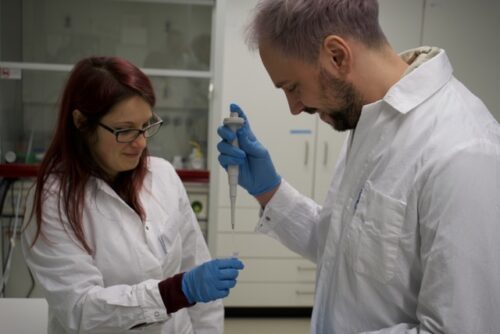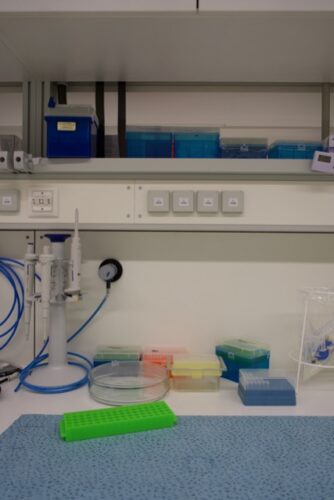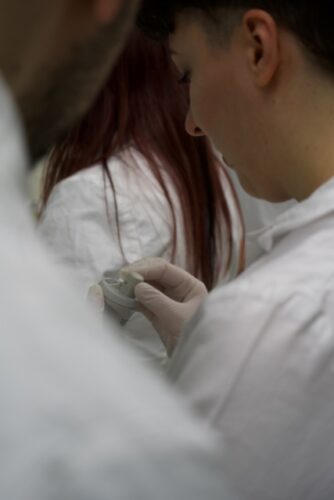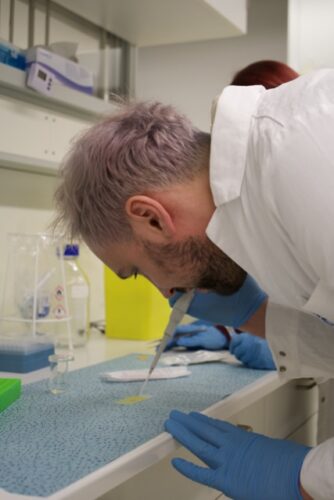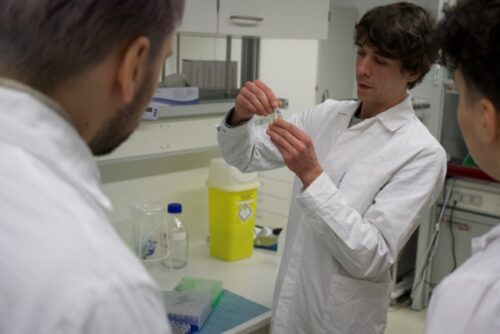By using DNA technologically a large field of ethical yet also practical questions arise.
In this course, participants embark on a journey into the nanosphere, to process DNA. In collaboration with scientists, we make DNA fold and create tiny structures that become detectable with the help of an atomic force microscope (AFM). The resulting images capture the structures beyond their short lifespan. They can only be seen through the microscope as they are otherwise far beyond the limits of human perception.
The experience of scientific processes and procedures in the laboratory serve the participants as a starting point for their artistic examination of the material generated. Not only the limitation of human perception by moving in the nanosphere, but also the extraordinary responsibility that goes along with working with DNA can be highlighted. Building on this, the role of one‘s own experience of scientific processes in relation to such a debate is to be reflected. The participants‘ resulting reflections will be translated into an artistic medium of their choice, thus creating a link between the scientific and artistic spheres. In this way, we try to make the invisible tangible through individual artworks.
PRACTICAL
- close collaboration with scientists at Fraunhofer ENAS
- learn to design own DNA structures using design and simulation software.
- introduction to the technical processes of laboratory work and the subsequent initiation of biochemical processes for folding DNA
- insight into the use of the atomic force microscope (AFM) and associated software.
- analysis of the resulting data in dialogue with the scientists
- translation of scientific data and personal experiences through the process into individual artistic expression
REQUIEREMENTS
- willingness to learn professional scientific software and processes
- interest in lab-specific work
